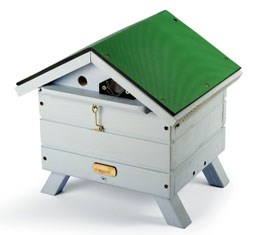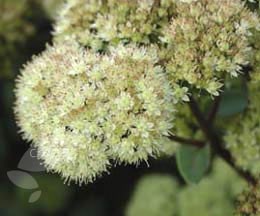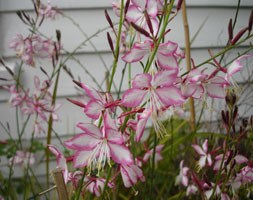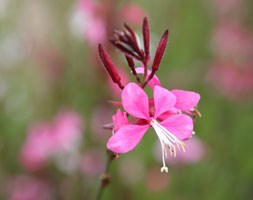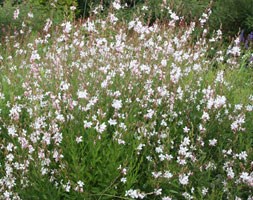New products at Crocus
by Sarah - May 19th, 2013.Filed under: Crocus, New Products.
New items today at Crocus
Bumblebee lodge including the hive of bees – Eau de Nil £159.99
Enjoy the sight and sound of native bumblebees at work in your garden with the lovely Eau de Nil garden hive including the bumblebees colony Pollination is as important to gardeners as it is to farmers and growers, without it fruit and pod vegetables do not set and yields are reduced. Bees are probably the most important pollinating insect and their recent decline in numbers has been widely reported. Planting bee friendly plants will help attract many different bee species to your garden but now gardeners can introduce their own bumblebee colonies. Housed and supplied in a maintenance free hive Each hive contains a queen bumblebee, 30-40 workers (the workers will breed to give a few hundred workers) and bee food to get them started Beepol bumblebees are a native UK species Reared in disease free, hygienic conditions for release into British gardens and wildlife areas Each colony has a viewing panel under the lid for observation of the bees Bumblebees are released by an easy to use trap door system Beepol hives incorporate a “bee home” system that allows bees back into the hive and holds them for later release if needed Beepol bumblebees will pollinate a wide variety of plants outdoors including fruit and some vegetable plants. They also help maximise yields from greenhouse grown plants like tomatoes, peppers and aubergines. The Beepol hive has been designed to educate as well as pollinate! A clear viewing panel in the lid allows observation of the colony it develops, whilst the exit and entrance system enable you to watch the bees at work, as they bring pollen back to the hive. Bumblebee colonies do not continue like honeybee hives, so Beepol hives have a limited lifespan and will need replacing. However before the queen bee dies; she produces young queens that will leave the hive to hibernate before establishing fresh new colonies in the spring. Introducing BEEPOL bees to your garden will help reward the fruits of your labour through pollination and add a fascinating new area of interest to be enjoyed by all.
Sedum telephium subsp. maximum ‘Gooseberry Fool’ (orpine) £7.99
Position: full sun or partial shade Soil: moderately fertile, well-drained, neutral to slightly alkaline soil Rate of growth: average to fast-growing Flowering period: September to November Flower colour: creamy green Other features: attractive to butterflies and bees; the dried flower-heads provide colour and structure in the winter garden Hardiness: fully hardy Succulent leaves, topped with large flat heads of creamy green, star-shaped flowers in autumn, will help soften the edges of a sunny border, or can be used to add late colour to a pot. This lovely perennial also looks great planted in drifts through a sunny gravel or coastal garden. Garden care: The flowerheads look great left during the winter to add shape and texture to your border. In February and March cut back the old flowerheads and apply a generous 5-7cm (2-3in) mulch of well-rotted garden compost or manure around the base of the plant. Once established, sedums can have a tendency to flop leaving an open and unsightly centre, especially in fertile soil. One technique to help prevent this is the ‘Chelsea chop’. During the last week of May (Chelsea Flower Show week), cut one in every three stems back to the ground. This will produce plants that are less lush and flower slightly later
Gaura lindheimeri ‘Rosyjane’ (gaura) £6.99
Position: full sun Soil: fertile, moist, but well-drained soil Rate of growth: fast-growing Flowering period: May to September Hardiness: fully hardy A real breakthrough in flower colour this selection has white flowers with a pink picotee edge. It is a bushy, clump-forming perennial, which poduces its flowers for a long period from late spring to early autumn. This plant will grow to around 75cms tall so is suited to the middle or back of any sunny border. A stunner from Hardy’s Cottage Plants, it was launched at The Chelsea Flower Show in 2008. Garden care: Resist the temptation to cut back after the plant has flowered, as it takes on beautiful autumn tints, particularly in cold weather. Cut back and divide large colonies in spring.
Gaura lindheimeri ‘Siskiyou Pink’ (gaura) £6.99
Position: full sun Soil: fertile, well-drained soil Rate of growth: average to fast-growing Flowering period: May to September Hardiness: fully hardy A graceful, hazy plant with airy spikes of bright pink, star-shaped flowers with long anthers like daddy long-legs, held high above the foliage on slender stems from May to September. This long-flowering perennial looks equally at home in an informal cottage-style garden or among soft grasses in a new perennial borde r. It is exceptionally drought-tolerant and will soak up the sun. Give it spac e, as its wispy stems will lean over. Garden care: Resist the temptation to cut back gaura after it has flowered as it takes on beautiful autumn tints, particularly in cold weather. Lift and divide large colonies in spring.
Gaura lindheimeri ‘Whirling Butterflies’ (gaura) £5.99
Position: full sun Soil: fertile, moist well-drained soil Rate of growth: average to fast-growing Flowering period: May to September Hardiness: fully hardy (borderline) A graceful, hazy plant with airy wands of white, fading to pink, star-shaped flowers with distin ctive long anthers like daddy long-legs, held on slender stems from May to Septe mber. This exceptionally long-flowering perennial, with slender, grey-green lea ves, looks equally at home in an informal cottage-style garden or among soft gra sses in a new perennial border. This variety is particularly free flowering, dr ought-tolerant and will soak up the sun. Give it space, as its wispy stems will lean over other plants and pathways. Garden care: Resist the temptation to cut back gaura after it has flowered as it takes on beautiful autumn tints, particularly in cold weather. Cut back and lift and divide large colonies in spring.







